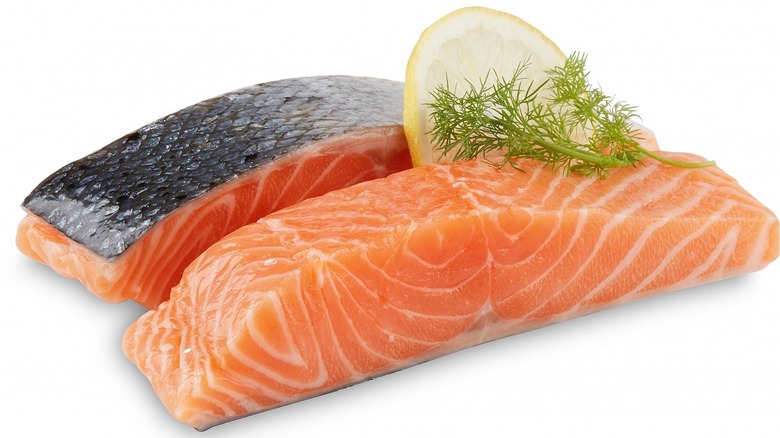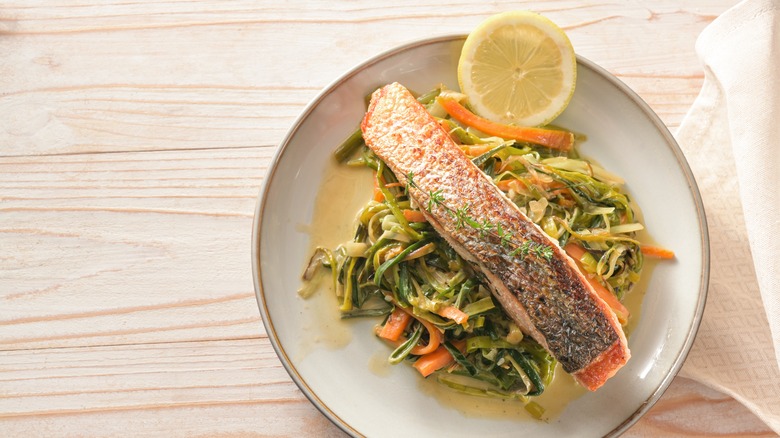The Hack That Makes Skinning Salmon Almost Too Easy
Chinook, Coho, Sockeye, Pink, Chum, and Atlantic are the six main varieties of salmon swimming upstream or in a body of water near you, according to FishingBooker. Aside from Atlantic salmon, the five other types are found in the Pacific Ocean, sporting the famous pinkish or Nantucket red color, as some call it, as their signature characteristic.
Chinook is the largest salmon, weighing up to 100 pounds, making this quite a trophy for anglers. Although prevalent, Sockeye salmon is often considered the most delicious by humans and grizzly bears alike. Unfortunately, you'll find Atlantic salmon almost fished to extinction on the East Coast. The fish's scarcity, weight, and fighting power make it a prize, but you'll have to travel to Lake Ontario or Northeastern Atlantic rivers to catch it.
At their fishmonger, home cooks may have noticed signs calling out whether salmon is farm-raised or wild-caught. The market is currently split in half between farmed and wild salmon. However, by 2030, the Food and Agriculture Organization of the United Nations predicts that about 66% of this omega-3-rich food will be farmed. When considering salmon varieties and farmed versus wild, consumers should compare nutritional value and taste, among other factors. Farmed salmon tends to be mild and flaky, unlike wild salmon, which has a stronger flavor, is firmer, and can be more pricey. To complicate things further, there's the debate on whether or not to remove the skin of the salmon.
To skin or not to skin
WFXB, an affiliate of Fox News, demonstrates in a quick video a salmon skinning hack that doesn't require any special equipment. In the clip, anchor Audra Grant directs home cooks to place their salmon fillets on a plate, skin-side up. Grant then goes on to suggest heating water in your microwave until it boils. The water is then slowly poured on the salmon fillets, and voila, the skin of the salmon easily peels away. Some may fear that boiling water will cook the fish, so the anchor warns viewers to pour off the standing water on the plate to avoid that. But is this additional step necessary at all?
A common salmon myth is that you shouldn't eat the skin of the fish. However, according to Healthline, since the human body can't produce omega-3 fatty acids on its own, it absorbs them from food sources. Most of the omega-3s our bodies need for muscle activity and cell growth are found in greater concentrations in salmon skin. The Mayo Clinic reports that heart disease, high blood pressure, high triglycerides, and cholesterol can be moderately reduced by omega-3s. What's more, omega-3s may also help relieve pain for rheumatoid arthritis patients. Still, some people may prefer to remove the skin from textural standpoint. To enjoy the best of both worlds, why not try this easy honey-baked salmon recipe for dinner with a side of crisped-up salmon skin chips?

